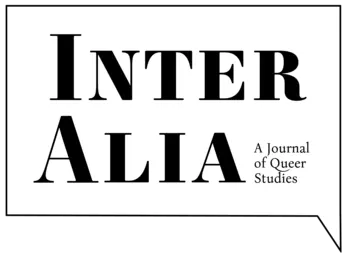https://doi.org/10.51897/interalia/JVOI5918
“Czasami zdaje się, że piekło udzieliło swym skazańcom przepustkę”. Odmieńcze pejzaże miejskie w Niemczech weimarskich a kwestia metronormatywności
Mathias Foit
Freie Universität Berlin
Abstrakt
Opracowaną przez Jacka/Judith Halberstam koncepcję metronormatywności rozumiem w dwójnasób: z jednej strony jako krytykę nadmiernej uwagi, jaką studia queer poświęcają miastom, a w konsekwencji braku zainteresowania przestrzeniami, ciałami i tożsamościami niemiejskimi, z drugiej zaś jako krytykę linearnej narracji, zgodnie z którą miasto jest niejako ostatecznym celem fizycznej i duchowej podróży każdej osoby odmieńczej – swego rodzaju Ziemią Obiecaną, w której każda tożsamość i pragnienia mogą być w pełni zrealizowane. O ile drugie z przywołanych zastrzeżeń jest uzasadnione, a miasto nie tylko ma potencjał wyzwoleńczy i jest źródłem możliwości, ale może również ograniczać, czy to poprzez działalność służb porządkowych, inwigilację czy represje, pierwsze jest zdecydowanie bardziej problematyczne, gdyż pomija mnogość odmieńczych urbanizmów (jak choćby lesbijski, metropolitarny/niemetropolitarny, robotniczy itd.), ich hierarchiczny charakter oraz mechanizmy alienacji w obrębie miejskich studiów queer. Aby udowodnić powyższe tezy, odwołam się do już istniejących krytycznych opracowań koncepcji metronormatywności oraz moich własnych badań dotyczących przestrzeni odmieńczych w Niemczech weimarskich (1919-1933), aby zaproponować bardziej zniuansowane podejście do tej idei, jak również podróż przez bary, pikiety, mieszkania i komisariaty weimarskich miast—podróż bynajmniej sentymentalną czy nostalgiczną, biorąc pod uwagę ówczesne, nierzadko bezwzględne realia osób odmieńczych, ale tym niemniej emocjonującą.
Słowa kluczowe
historia queer, metronormatywność, Republika Weimarska
Abstract
My understanding of Jack/Judith Halberstam’s idea of metronormativity is twofold: as a critique of queer studies’ inordinate, out-of-proportion attention to cities and resultant neglect of rural or non-urban spaces, bodies and identities on the one hand; and of the progressivist narrative in which the city becomes the ultimate goal and destination of every queer person’s spiritual and geographical journey, a kind of a Promised Land where one’s identity and desires can be lived out fully. While the second of Halberstam’s two objections is justifiable, and the city does not only liberate or provide opportunities, but can also constrain (whether by policing, surveillance or repression), the first is much more problematic, overlooking the plurality of queer urbanisms (for example, lesbian, metropolitan vs. non-metropolitan), their hierarchical structure and mechanisms of othering in queer urban studies. To argue these two points, I will refer to existing critiques of the concept as well as my own doctoral research on the queer spaces of Weimar-era Germany (1919-1933) to offer a more nuanced approach to metronormativity. Also, I would like to take the readers on a journey through the bars, cruising spots, apartments and police stations of night-time Weimar cities: a journey that, given the oftentimes harsh realities of queer people in that period, is far from sentimental or nostalgic, but none the less thrilling.
Keywords
queer history, metronormativity, Weimar Republic
